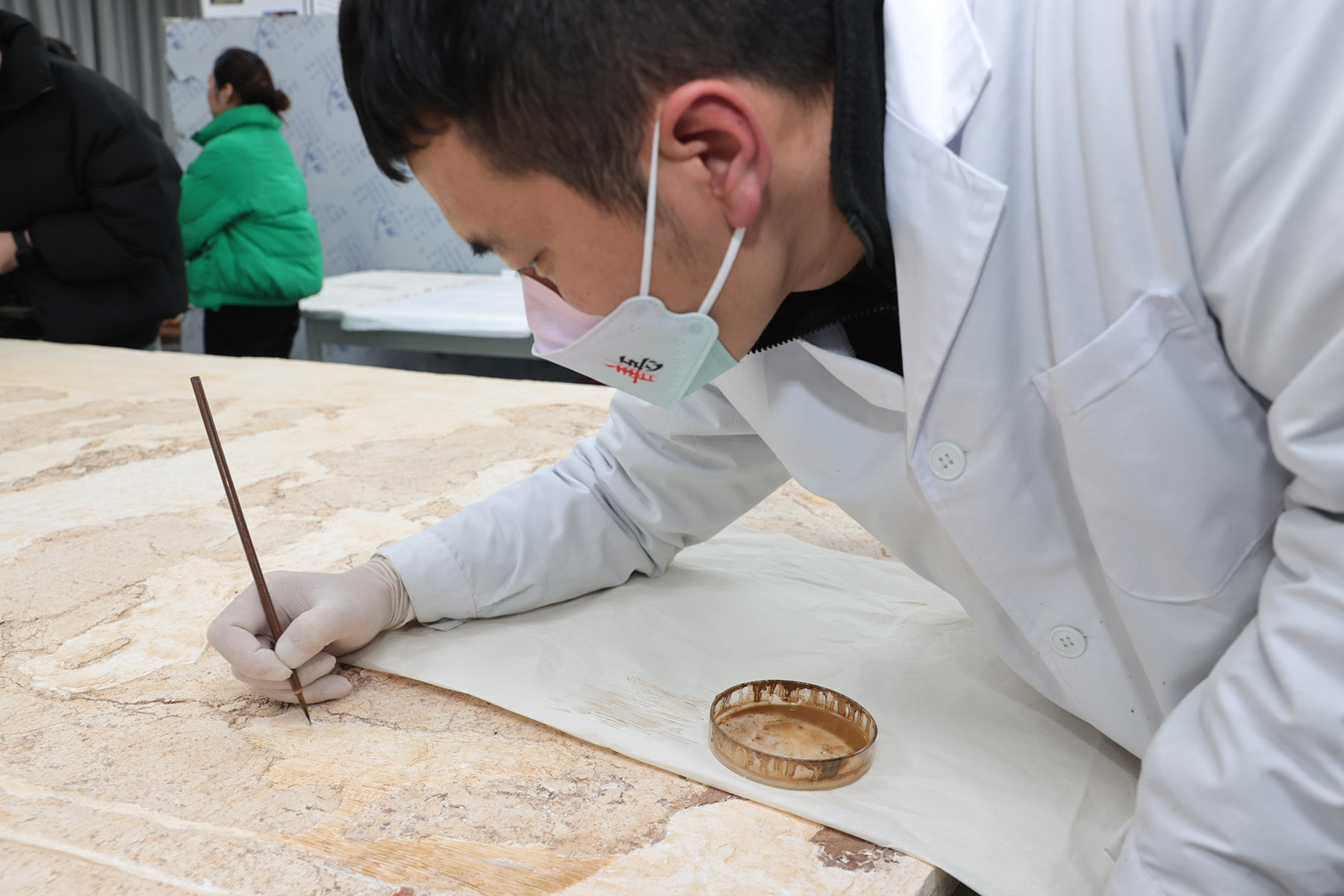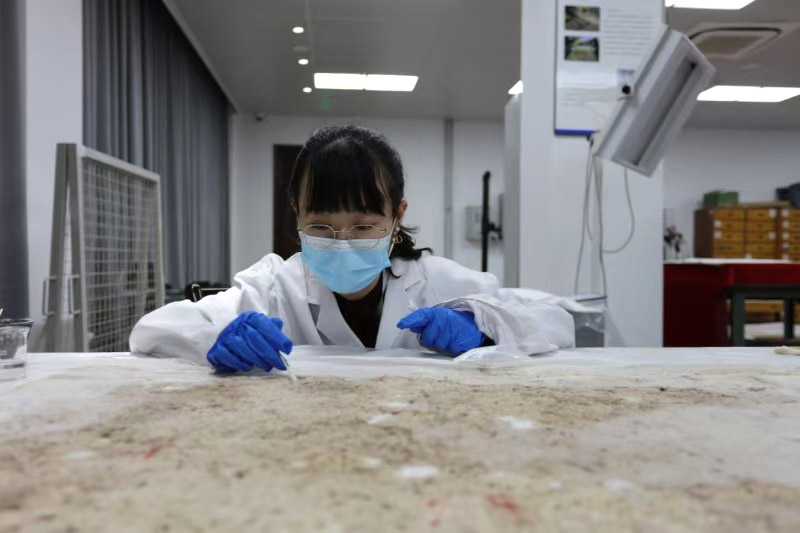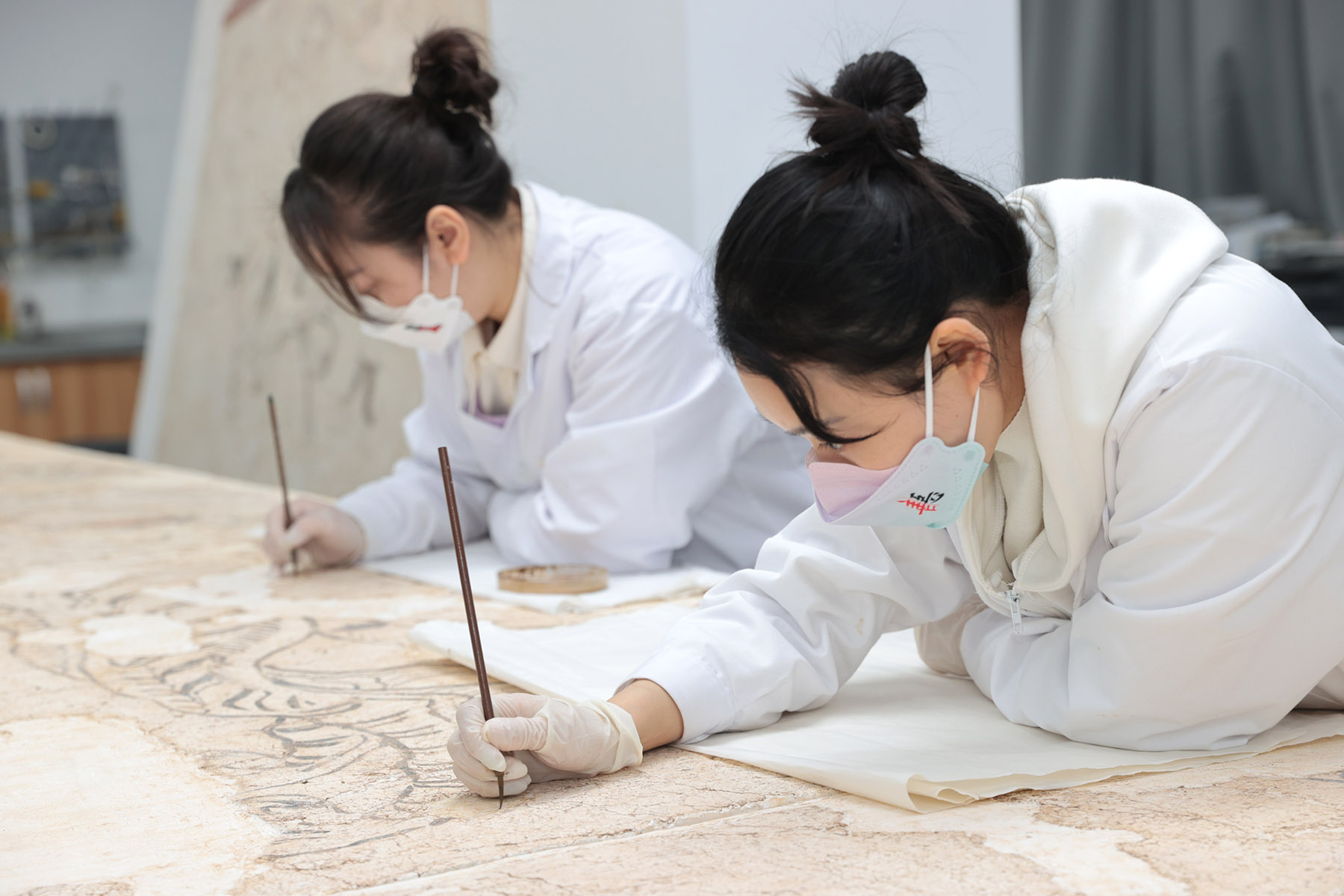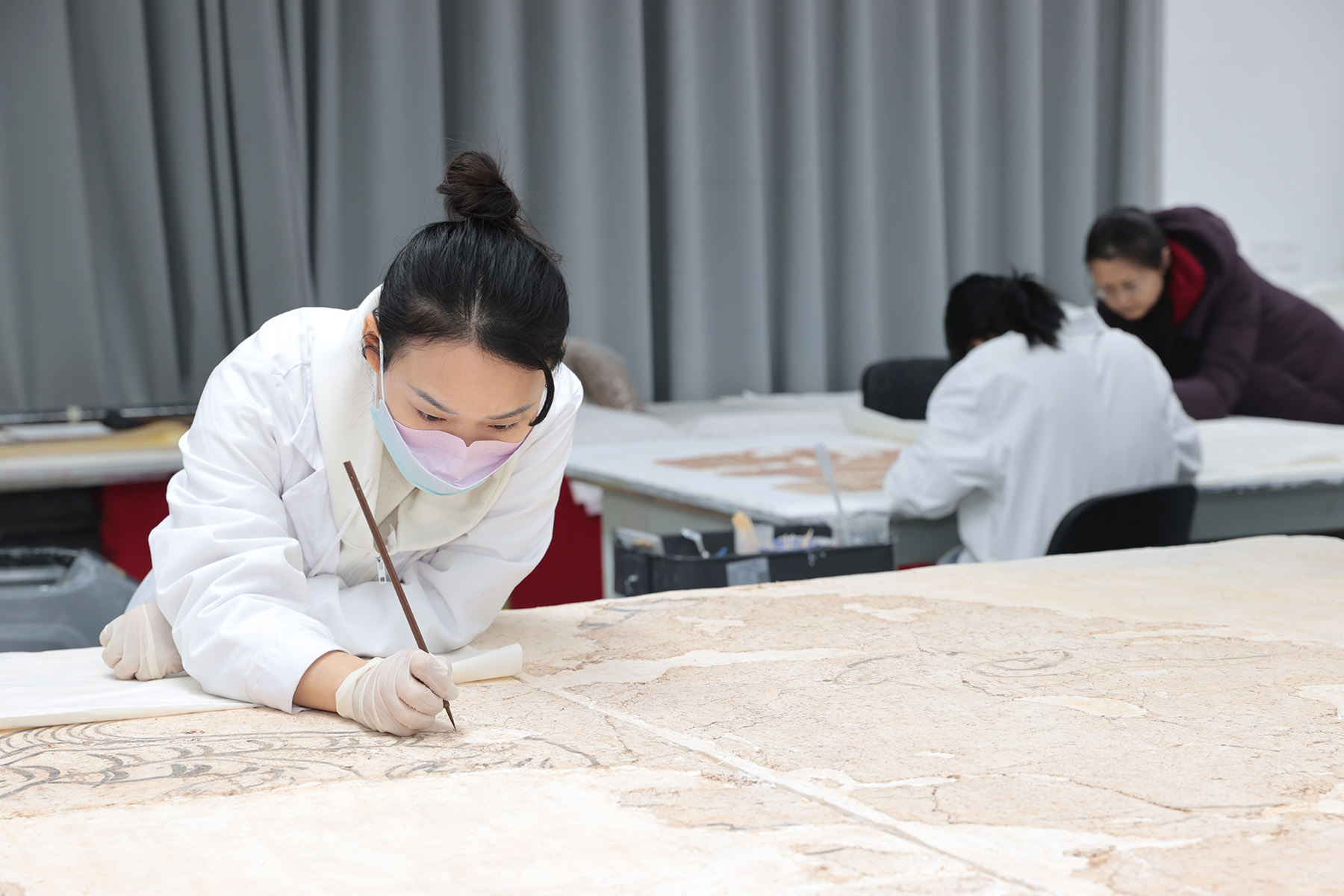Mural restorers work on ancient artworks to get clearer understanding of the past, Qin Feng and Chen Nan report in Xi'an.

In the restoration lab of the Shaanxi History Museum in Xi'an, Shaanxi province, a group of young people is engaged in a quiet yet profound dialogue with history. Each meticulous gesture breathes new life into artifacts that carry the weight of millennia.
Working on the restoration of Han Xiu's tomb murals, Jin Zilin, a "relic doctor", has devoted herself to the protection and restoration of cultural relics since joining the museum in 2016.
The restoration of Han Xiu's tomb murals began in 2014, after the ancient tomb of Han, a senior official of the Tang Dynasty (618-907), was unearthed in the Chang'an district of Xi'an, capital of Shaanxi province, in 2013.
A joint archaeological team was formed from the Shaanxi Academy of Archaeology, Shaanxi History Museum and the cultural heritage bureau of Chang'an district. Their mission was to recover 21 murals, 18 of which were painstakingly removed using a delicate technique to transfer the fragile artworks to the lab, while the three largest murals were carefully packed and moved intact.
READ MORE: Ancient 'mini library' unearthed
"Each mural is a vessel of history, but when we discovered them, they were already severely damaged. The Picture of Xuan Wu, in particular, had been shattered into countless pieces by tomb robbers," recalls Jin, 33, who graduated from Northwest University in Xi'an with a master's degree in archaeology.
Xuan Wu, also known as the black tortoise, is a traditional Chinese symbol representing the north and protection. It is often depicted entwined with a snake.
The fragments vary in size and, if not handled carefully during the restoration process, larger fragments may become smaller, and smaller fragments could turn into dust. Therefore, the process of piecing them together requires a significant amount of time and precision.

In the lab, Jin and her colleagues pieced together these fragments. "It's like assembling a massive jigsaw puzzle," Jin says. "We rely on the alignment of lines and shapes, constantly comparing them until the entire picture is re-formed."
But restoration is not only about putting pieces back together. Another challenge lay in removing temporary reinforcements applied during the murals' transport from the tomb to the museum. These materials, meant to protect the murals, had to be carefully scraped away using cutting tools and specialized solvents, ensuring that the murals were not damaged in the process.
The field of mural restoration has evolved significantly, merging traditional craftsmanship with cutting-edge technology. For the Han Xiu's tomb murals, advanced instruments and methods like extended depth of field microscopes, Raman spectroscopy and X-ray fluorescence spectroscopy became invaluable tools.
"These devices are like the 'checkup tools' for the murals," Jin explains. "They help us understand the structure, pigment composition and condition of the murals."
Through scientific analysis, the restorers gain crucial insights into the murals, allowing them to craft tailored restoration strategies. For example, during the restoration of the Yue Wu Tu mural, or Picture of Music and Dancing, spectral analysis revealed that certain patterns had been modified by the original Tang Dynasty artist.
"These changes were part of the original creation process," Jin explains, emphasizing how technology helps uncover the artwork's authentic history.
In addition, the repairers in the lab carefully select materials and methods through a series of experiments, ensuring they use the most appropriate materials for each restoration. "Even choosing the right adhesive requires extensive testing," Jin adds.

According to Jin, the philosophy of mural restoration is to preserve the mural's integrity. One of the core principles in artifact conservation is the preservation of the original state.
"Our goal is never to enhance the aesthetic appeal of the mural by adding color or lines that weren't part of the original. We restore missing sections with a neutral filler and later refine the overall aesthetic to ensure harmony, but we never paint over or alter the original artwork," Jin says.
This approach prioritizes the integrity of the artifact, ensuring it remains as close as possible to its original form.
"We want the murals to retain their authentic appearance," Jin says. "This 'authentic protection' respects the mural's historical value, allowing future generations to study the original as it was."
In recent years, the field of artifact restoration has captured public attention, especially through popular TV shows like National Treasure, produced by the China Media Group, which showcases national treasures from cultural institutions, and the three-part TV documentary Masters in the Forbidden City.
The work of an artifact restoration technician is time-consuming, demanding patience and precision.
"Restoration is a test of one's mental fortitude. Every step requires complete focus because even the smallest mistake can result in irreversible damage," Jin recalls.
She remembers her early days when the pressure of working with such precious, delicate murals was overwhelming. "But as time went on, I became fascinated by the history embedded in the artwork," she says. "When we finish restoring a mural, I can almost feel the vibrancy of that ancient dynasty, as if we're touching the pulse of a bygone era."

Jin also emphasizes the importance of teamwork. "Our team is primarily made up of young people born in the 1990s, and the atmosphere is great. Restoration is a collective effort, and any mistake at one stage can affect the entire project. Cooperation is key."
Jin is among the 14 female conservators at the Shaanxi History Museum. Their craftsmanship and dedication bring ancient works of art back to life.
The museum has also set up a transparent working area open to the public, showcasing the restoration process.
"Through these exhibitions and interactive activities, we aim to make the public not just spectators but active participants in the preservation of cultural heritage," says Jin. "When I see more and more people taking an interest in our work, I feel both proud and responsible."
ALSO READ: Lost relics from Mogao Grottoes to be 'digitally restored'
Looking to the future, Jin is hopeful. "With advancing technology, we will have even more precise tools to protect our cultural relics," she says. "At the same time, we hope to continue engaging the public through exhibitions and interactive experiences, fostering a greater appreciation for the preservation of cultural heritage."
In early 2024, an exhibition titled Splendid Tang Dynasty: Archaeological Excavation and Conservation of Murals in Han Xiu's Tomb was held at the Shaanxi History Museum, showcasing 21 murals from the tomb for the first time.
"These murals cover a range of aspects, from music and dance to daily life and natural scenery, depicting the lifestyles and social landscape of the officials of the Tang Dynasty," said Gao Xiaochao, head of the mural conservation branch department under the museum's protection and restoration department, in an earlier interview. "The murals are valuable works of art, which are also important for historical research. The restoration of the Han Xiu tomb murals is not only a technical feat but also a heartfelt commitment to history."
As Jin puts it, "Artifacts are the witnesses of history, and each mural, each object, tells a story that spans thousands of years. Our work ensures that these stories live on, preserving the true memories of the past for future generations."
Contact the writers at chennan@chinadaily.com.cn


